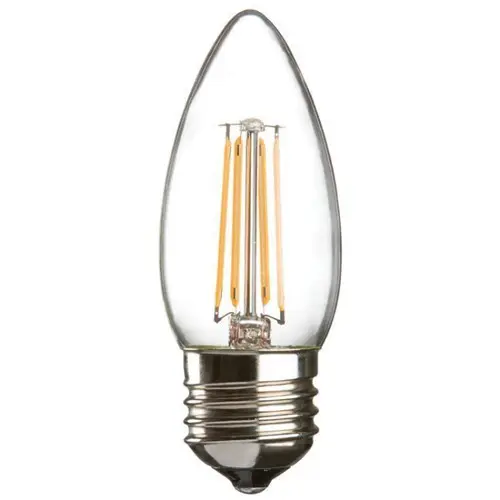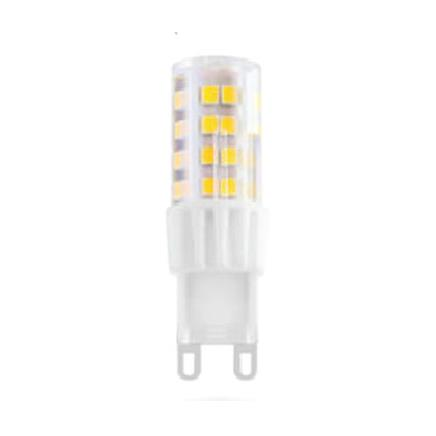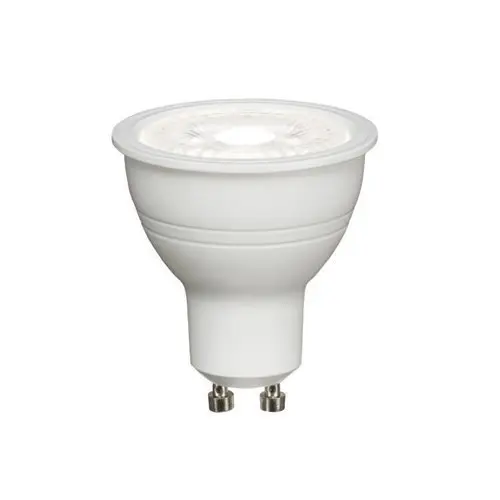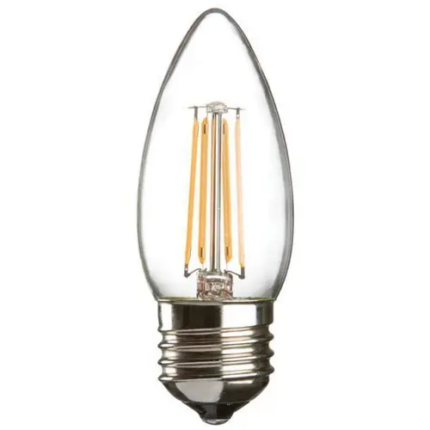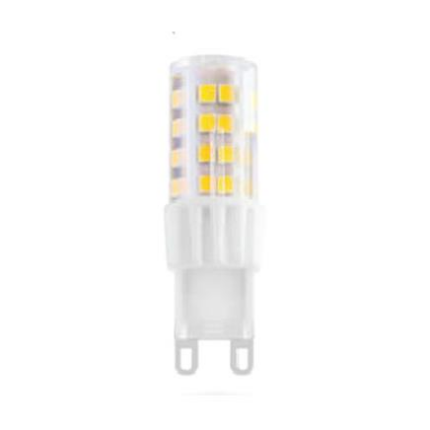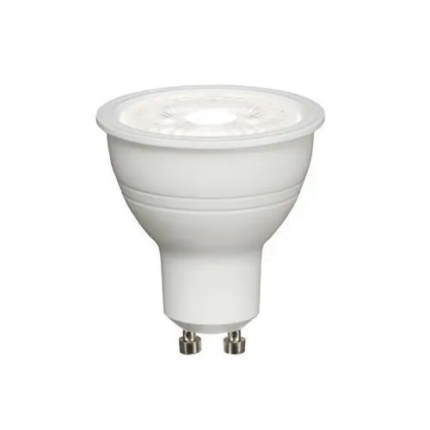I. Introduction
Lighting plays a pivotal role in our daily lives, whether it's creating a cosy ambiance in our living rooms, illuminating workspaces for productivity, or adding a touch of elegance to our dining areas. However, selecting the right lighting bulb can often feel like a daunting task, with a myriad of options available on the market. The choice you make not only influences the quality of light but also impacts energy consumption, electricity bills, and the overall atmosphere in your space.
Imagine walking into a room bathed in warm, welcoming light that instantly puts you at ease, or a workspace illuminated with bright, crisp light that invigorates your productivity. Achieving these desired lighting effects begins with choosing the right bulb. In this guide, we'll take you through the essential factors to consider when selecting a lighting bulb, explore the common types of bulbs available, and provide practical insights to help you make informed decisions. Whether you're looking to create a soothing ambiance in your bedroom, illuminate your kitchen workspace effectively, or simply reduce your energy footprint, this guide will illuminate your path to the perfect lighting solution. Let's embark on a journey to discover how the right lighting bulb can transform your space and enhance your daily life.
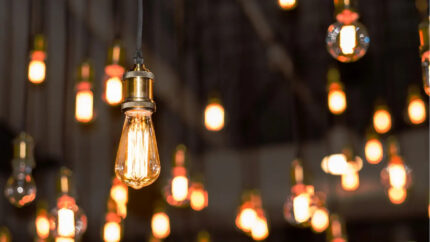
Shop Popular Lighting Bulb Categories
II. Types of Lighting Bulbs
When it comes to lighting your home or workspace, not all bulbs are created equal. The type of lighting bulb you choose can significantly affect the mood, energy efficiency, and functionality of your environment. Let's explore some common types of lighting bulbs and what makes each of them unique:
- LED bulbs have revolutionised the lighting industry. They are incredibly energy-efficient, lasting up to 25 times longer than traditional incandescent bulbs while using a fraction of the energy. ES (Edison Screw) bulbs have a larger screw base, while SES (Small Edison Screw) bulbs have a smaller one. These versatile bulbs are suitable for various fixtures, from table lamps to pendant lights.
- Bayonet Cap (BC) bulbs are easy to install and remove, making them a popular choice for ceiling fixtures, wall sconces, and table lamps. They come in LED versions for energy savings without sacrificing brightness.
- These compact LED bulbs are perfect for small fixtures like desk lamps and under-cabinet lighting. G4 bulbs have a two-pin base, while G9 bulbs have a thicker two-pin base. They provide efficient and focused lighting.
- GU10 bulbs are known for their directional lighting. They are commonly used in spotlights, track lighting, and recessed fixtures. The adjustable beam angle makes them ideal for accent lighting.
- If you're looking for precise accent lighting, MR11 and MR16 bulbs are the answer. They are often used in track lighting and landscape fixtures. MR bulbs come in various beam angles and colours to suit different applications.
- For a touch of elegance and classic charm, candle LED bulbs mimic the shape of a candle flame. They are commonly used in chandeliers, wall sconces, and decorative fixtures. These bulbs offer both style and energy efficiency.
Each of these bulb types has its own set of advantages and applications, allowing you to customise your lighting to suit your specific needs. In the following sections, we'll delve deeper into factors to consider when choosing the right bulb for your space and how to achieve the perfect lighting for every occasion.
III. Considerations for Choosing the Right Bulb
Selecting the perfect lighting bulb goes beyond just picking a type that fits your fixture. To make an informed choice, consider these crucial factors that can significantly impact the lighting quality and energy efficiency in your space:
- Brightness (Lumens): When it comes to lighting, brightness matters. Lumens measure a bulb's brightness, and the higher the lumens, the brighter the light. Consider the purpose of the lighting. For task lighting, such as reading or working at a desk, opt for bulbs with higher lumens. For ambient or mood lighting, lower lumens may create a cosier atmosphere.
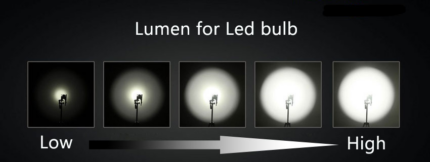
- Colour Temperature (Kelvin): The colour temperature of a bulb affects the mood and ambiance of a room. Lower Kelvin values (around 2700K) produce warm, yellowish light, suitable for bedrooms and living areas. Higher Kelvin values (5000K or more) emit cool, bluish-white light, ideal for task-oriented spaces like kitchens or offices.

- Energy Efficiency (Wattage): Energy-efficient bulbs not only save you money but also reduce your environmental footprint. LED bulbs are the champions of energy efficiency, using significantly less power than incandescent bulbs while producing the same amount of light. Look for the ENERGY STAR label or an energy efficiency rating to ensure you're making an eco-friendly choice.
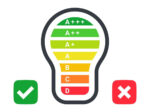
- Lifespan: Nobody wants to change light bulbs frequently. LED bulbs, in particular, boast impressive lifespans, often lasting 25,000 to 50,000 hours or more. Compare this to the mere 1,000 to 2,000 hours of incandescent bulbs, and you'll see the advantage of longevity.
- Compatibility: Ensure that the bulb you choose fits your fixture. The base type (e.g., ES, SES, BC, GU10) and the bulb's dimensions should match your lighting fixture to avoid installation issues.
Taking these considerations into account will help you make an informed decision when selecting a lighting bulb. Whether you're looking to create an inviting ambiance or a productive workspace, understanding these factors will guide you towards the perfect lighting solution for your needs. In the next sections, we'll explore more aspects of lighting selection, including cost considerations and common lighting applications.
IV. Common Lighting Applications
Understanding the different lighting applications is key to selecting the right bulb type for your specific needs. Let's explore some common lighting applications and the types of bulbs that work best for each:

General Lighting
- This is the primary lighting source in a room and provides overall illumination. For general lighting, consider LED bulbs with a moderate level of brightness. ES or SES LED bulbs are excellent choices for ceiling fixtures, pendant lights, and table lamps. They offer versatility and energy efficiency to light up your entire space.
Task Lighting
- Task lighting is focused illumination for activities like reading, cooking, or working at a desk. For tasks that require concentration, choose brighter LED bulbs with higher lumens. GU10 LED bulbs are ideal for spotlights and task lighting fixtures, ensuring that you have ample light where you need it most.
Ambient Lighting
- Ambient lighting creates a comfortable and inviting atmosphere. Lower color temperature bulbs (around 2700K) are perfect for this purpose, as they produce warm, cozy light. Consider candle LED bulbs for chandeliers and wall sconces to add a touch of elegance to your ambient lighting.
Outdoor Lighting
- Outdoor spaces require lighting solutions that can withstand the elements. For outdoor fixtures, such as landscape lighting or security lights, opt for LED bulbs designed for outdoor use. They are durable, energy-efficient, and provide ample illumination to enhance safety and aesthetics.
Decorative Lighting
- If you're looking to add a decorative element to your space, consider bulbs with unique shapes and filaments. Edison-style LED bulbs or vintage filament bulbs can add a nostalgic touch to your lighting fixtures, enhancing the visual appeal of your decor.
Specialised Lighting
- Some spaces may require specialised lighting, such as aquarium lighting, grow lights for plants, or UV-C disinfection bulbs. Be sure to choose bulbs designed for these specific applications to ensure optimal performance.
Understanding the purpose of your lighting and the right bulb type for each application will help you create a well-lit and functional environment tailored to your needs. In the following sections, we'll delve into cost considerations and offer tips on how to achieve energy-efficient lighting solutions.
V. Cost Considerations
While choosing the right lighting bulb, it's important to consider not only the upfront cost of the bulb but also the long-term savings it can offer. Here are some cost-related factors to keep in mind:

Initial Cost
- Different types of bulbs come with varying initial price tags. LED bulbs tend to be more expensive upfront compared to traditional incandescent bulbs. However, consider it as an investment. LED bulbs last significantly longer, meaning you'll replace them less often.
Energy Efficiency
- One of the most significant cost advantages of LED bulbs is their energy efficiency. They use much less electricity than incandescent bulbs to produce the same amount of light. Over time, this results in lower electricity bills, saving you money in the long run.
Lifespan
- LED bulbs have a significantly longer lifespan compared to incandescent or CFL bulbs. This means you'll spend less on replacements over time. In fact, one LED bulb can last as long as several incandescent bulbs.
Maintenance Costs
- LED bulbs require less maintenance due to their long lifespan. With traditional bulbs, frequent replacements can add up to maintenance costs. With LEDs, you can enjoy hassle-free lighting for years.
Environmental Impact
- Consider the environmental cost of your lighting choices. LED bulbs are eco-friendly because they consume less energy and have a lower carbon footprint. Choosing energy-efficient bulbs helps reduce greenhouse gas emissions and contributes to a greener planet.
When considering the cost of lighting, it's essential to look beyond the initial purchase price and consider the long-term benefits of energy efficiency and extended lifespan. While LED bulbs may have a higher upfront cost, their significant savings over time make them a wise investment for both your wallet and the environment. In the upcoming sections, we'll explore different lighting applications and help you choose the right bulb for each scenario.
VI. Conclusion
Choosing the right lighting bulb isn't just about illumination; it's about creating the right atmosphere, saving energy, and being environmentally conscious. Whether you're aiming for a cosy corner or a productive workspace, understanding your lighting needs and prioritising energy-efficient options, like LED bulbs, is key. These choices not only save you money in the long run but also reduce your environmental impact. Remember that investing in bulbs with longer lifespans is a smart move, and staying informed about lighting innovations ensures you're making the most of your space while conserving resources. So, make your lighting decisions thoughtfully, and you'll enjoy the benefits for years to come, all while illuminating your life with style and efficiency.


